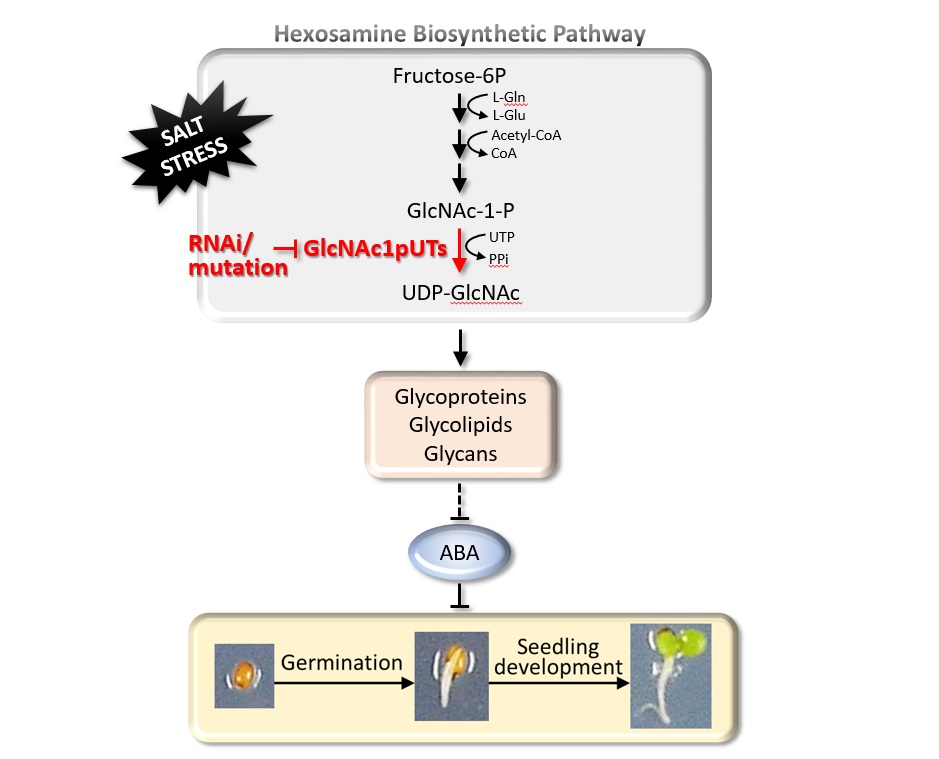[Wan-Hsing Cheng] Interfering the expression of GlcNAc1pUTs affects UDP-GlcNAc biosynthesis, protein N-glycosylation and ABA-mediated salt stress response.
POST:N-acetylglucosamine (GlcNAc) is the fundamental amino sugar moiety that is essential for various glycosylation events, including protein N-glycosylation. UDP-GlcNAc, an active form of GlcNAc, is synthesized through the hexosamine biosynthetic pathway (HBP) that integrates a number of crucial energy components (fructose-6P, L-Gln, acetyl-CoA and UTP; see Figure). A study on RNAi and mutation of Arabidopsis N-acetylglucosamine-1-P uridylyltransferases (GlcNAc1pUTs) that catalyze the last step in the HBP pathway, reveals its important roles not only in UDP-GlcNAc biosynthesis and protein N-glycosylation, but also in ABA-mediated salt stress responses, including germination delay and seedling developmental arrest. This study provides an insight for a potential interaction between energy metabolism (UDP-GlcNAc) and phytohormone ABA biosynthesis and signaling in response to salt stress. This study was recently published in the Frontiers in Plant Science (https://doi.org/10.3389/fpls.2022.903272). The first author of this work is Dr. Ya-Huei Chen, a former Ph. D. student in the Program of IPMB-AS and Graduate Institute of Life Sciences (National Defense Medical Center).
